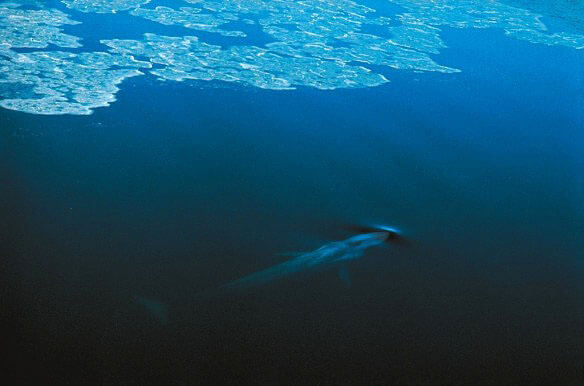On March 6, while walking on the beach near the Cap-des-Rosiers lighthouse, an observer noted the presence of harbour seals in the water. “It looks as if they’re sleeping, their heads are poking out of the water and their submerged bodies are motionless,” she notes. The frigid air forces the animals to protect themselves. To successfully maintain an adequate body temperature without losing too much energy, seals remain in the water, which is warmer than the air.
Is it dangerous for pinnipeds to sleep in the water? Just like whales, seals are mammals and, as such, must come to the surface to breathe. But unlike whales, they have the ability to leave the water to rest, their bodies being well suited to both marine and terrestrial environments. However, a shoreline, rock, buoy or ice for sleeping is not always readily available. Furthermore, predators or beach activity may force them to remain offshore. Pinnipeds have developed the ability to remain half awake when sleeping in the water. When they are able to “hit the hay” out of the water, they enjoy a deep sleep. Whales on the other hand always sleep only partially, resting one side of the brain at a time. This is how they are able to avoid drowning.
“The water is opening up; soon we should see seals,” optimistically says an observer from Matane. The landscape is changing rapidly. Whereas just a few days ago, we saw nothing but ice as far as the eye could see, patches of water now appear here and there. After another 250 metres or so, the river unveils its full grandeur.
On March 12 in Tadoussac, the ice floes are streaming by on the Saguenay. The icebreaker frees the river of its frozen mantle. On March 13, these chunks of ices pile up off the coast of Les Bergeronnes. “No room to breathe, no sightings,” laments one observer after trying his luck at Cap de Bon-Désir.
In Baie-Comeau as well, the ice has retreated. And yet, still no marine mammals in sight. Two hundred kilometres farther downstream, off the coast of Sept-Îles, a blue whale takes advantage of the open water to blow. On March 9, our observer noted the presence of one of these giants east of the western tip of Île Grosse Boule. And, despite the extent of ice-free waters, there wasn’t a single seal in sight.





